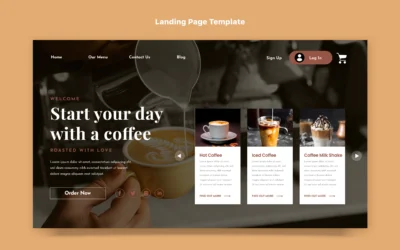Introduction
The current market is a world of “big data analytics” and “mobile data”, where not only buyers but also companies struggle to understand how to benefit from those trends. The use of analytics for the purpose of enhancing the profits of a restaurant through increased capital investment as well as operational efficiency is discussed in this blog post. Also, let us bust myths around these terms and discuss how customer analytics can strengthen a restaurant’s business operation.
Defining Analytics
Essentially, analytics in the restaurant business is finding out the “who”, “where” and “value” of your best buyer. It may sound simple, but it’s a complicated process. It’s not just about demographics, which provide a black-and-white picture. Customer analytics involves understanding psychographics or household-level data, which reveals details such as consumer behavior, preferences, and spending capacity. It’s about comprehending where your customers live, work, and play, and how much disposable income they have to spend in your restaurant.
Value Relative to Location
The value or importance of customers depends upon how close it is to the restaurant. For instance, a customer working just two minutes away from your restaurant holds a higher value than one working five to ten minutes away. To optimize this, Milagro develops a customer data analytics platform to analyze for clients, tailored to the daypart and location. This analysis helps businesses identify areas of opportunity in both existing and new markets.
Applying Analytics: Three Scenarios
Scenario 1: Infilled Markets
In this scenario, the objective is to maximize existing markets, ensuring cost efficiency, distribution, and marketing advantages. Analytics are applied at a market level to determine the number of units a concept can support in a given market. Prioritizing branch openings systematically based on the best customers and growth opportunities is the key. This approach assists in ensuring that new units do not cannibalize existing ones and helps in market optimization.
Scenario 2: Right-Sizing the Market
To optimize market layouts and ensure all units are in the right locations, a white space potential analysis is performed. This analysis helps businesses identify the ideal number of units and their positions based on the characteristics of their best customers. This is particularly important in today’s competitive restaurant landscape, where consumer preferences and ordering options are constantly evolving.
Implement data-driven strategies to optimize your restaurant’s performance.
Scenario 3: Optimizing Restaurant Performance
Optimizing restaurant performance involves assessing the existing store network to identify opportunities for incremental revenue. This is an ongoing process, with clients regularly examining their portfolio’s performance. By understanding where they might be leaving money on the table, businesses can make adjustments in areas such as menu offerings and marketing campaigns to drive revenue.
Scenario 4: Scaling Local Store Marketing Applications
Local Store Marketing (LSM) applications empower franchisees and operators to visualize their trade areas, competitors, and local events. They can then execute marketing campaigns targeted at their best customers based on where they live, work, and play. Local Store Marketing (LSM) allows for quick and efficient management of marketing campaigns, offering real-time results.
Conclusion
Customer analytics have become a critical tool for maximizing capital investment and operational efficiency in the restaurant business. By understanding the “who,” “where,” and “value” of their best customers, businesses can make informed decisions about market expansion, location optimization, and local store marketing. These scenarios are not one-time solutions but should be applied continuously to adapt to changing consumer behaviors and preferences. In today’s competitive landscape, leveraging customer analytics is the key to staying ahead in the restaurant industry.





